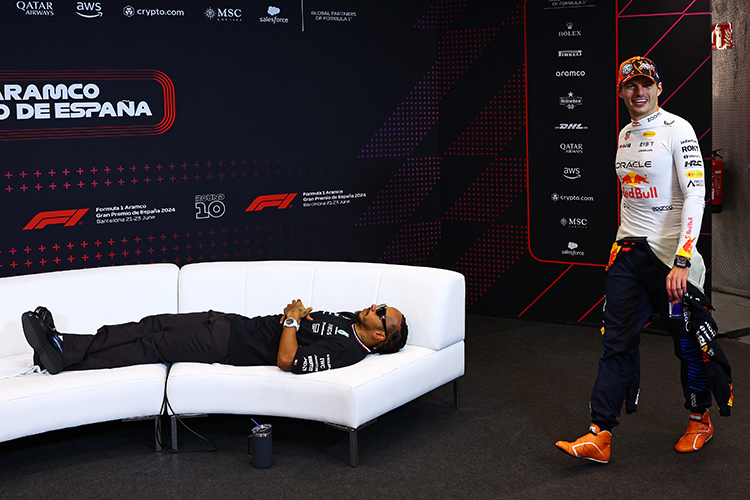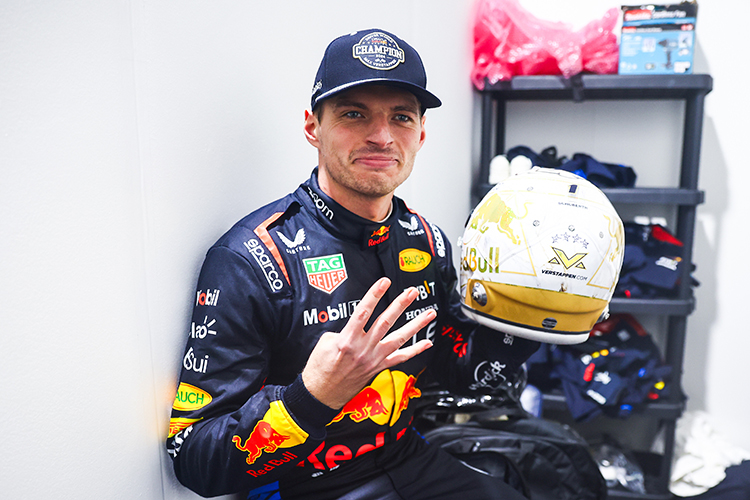F1 Driver Dimensions: How Height, Weight, and Size Influence Competitiveness on the Grid
F1 Driver Dimensions: How Height, Weight, and Size Influence Competitiveness on the Grid
In Formula 1, speed is sculpted not only from carbon fiber and wind-tunnel dreams. The human in the middle of the machine is part of the performance equation. A few centimeters of height, a handful of kilograms, the way a driver fits the cockpit—all of it can add or erase lap time.
While driver size is not the primary factor for success in F1, weight is critical because lighter drivers allow teams to strategically place ballast to optimize car balance and handling, though the FIA's 2019 minimum driver weight rule leveled the playing field. Height can present challenges due to cockpit space constraints and potential aerodynamic impacts, but it can be accommodated. Therefore, teams seek a balance between a driver's physical attributes and the overall performance requirements of the car.
Short Summary on: Driver Size and Its Impact on Formula 1 Performance
Weight's Impact
- Ballast Advantage: The lighter a driver is, the more flexibility a team has to add ballast to the car.
- Strategic Placement: Ballast is strategically placed to optimize the car's weight distribution and handling characteristics.
- Minimum Weight Rule: The FIA introduced a minimum driver weight (including suit and helmet) of 80kg in 2019 to ensure that lighter drivers no longer have an advantage and to prevent taller, naturally heavier drivers from being unfairly penalized.
Height's Influence
- Cockpit Fit: Taller drivers can face challenges fitting comfortably into the cockpit, which can affect their comfort and potentially their performance.
- Aerodynamic Considerations: A larger frontal area from a taller driver might create slightly more aerodynamic drag, but this is a minor factor in modern F1 design.
- Pedal Reach: Shorter drivers may also have issues reaching the pedals, sometimes requiring modifications to the car, as seen with Yuki Tsunoda in 2021.
Overall Influence on Competitiveness
- Team Adjustments: A driver's dimensions influence the adjustments the team makes to the car to achieve its maximum potential.
- Balance of Forces: F1 drivers must strike a balance between being strong enough to handle the car's forces and being light enough to optimize performance.
- Equalizing the Field: The regulations, particularly the minimum driver weight, have been adjusted over time to level the competition between drivers of different sizes.
Here’s how driver dimensions really matter, what the rules do to level the playing field, and where the trade-offs still live.
Why size matters in a 300 km/h equation
- Margins are microscopic. A typical rule of thumb: 10 kg of extra mass can cost roughly 0.2–0.35 seconds per lap, depending on track layout and conditions.
- Placement matters as much as amount. Weight high up raises the center of gravity; weight low and central improves agility and tire usage.
- The driver isn’t cargo. Their body position, posture, and comfort affect consistency, braking confidence, and the ability to ride kerbs—especially over a full race distance.
The rules that frame the fight
- Minimum car weight: In recent seasons the car minimum has sat around the high-700 kg mark (for 2024, 798 kg, without fuel and without the driver). Teams constantly grind to meet or beat that number.
- Minimum driver weight: Since 2019, F1 uses a separate minimum of 80 kg for the “driver + seat” assembly. If a driver weighs less than that in full kit, ballast must be added in the cockpit area to make up the difference.
What that changes:
- Before 2019, heavier and taller drivers were directly penalized because the minimum weight included the driver. Unhealthy dieting was a real concern.
- Now, super-light drivers no longer gift their teams free, low-mounted ballast. The required ballast to reach 80 kg has to live around the seat—higher than the car’s keel—so the center-of-gravity benefit is limited.
- Heavier drivers still give away setup flexibility: any kilos above 80 sit relatively high and reduce how much movable ballast the team can place elsewhere.
Weight: the sneakiest performance variable
- Lap time: Extra kilograms hurt everywhere—longer braking distances, more energy needed for acceleration, and greater tire and brake load.
- Tire life and warm-up:
- Heavier drivers can bring tires up to temperature a touch quicker, helpful in cool qualifying sessions or after a Safety Car.
- Over a stint, that same mass can mean slightly higher degradation, especially on rear-limited tracks.
- Fuel and energy: More mass increases fuel burn and stresses hybrid recovery less directly, but the effect is small relative to strategy swings and car efficiency.
- Starts and racecraft: A kilo or two won’t decide a launch, but weight distribution (and thus traction) can. The tiny differences compound through a race.
Ballast and center of gravity: where the magic lives
- Light driver (e.g., 70 kg in kit):
- Must carry ~10 kg of ballast near the seat to reach 80 kg. That ballast sits higher than ideal, so the upside is smaller than it used to be.
- If the car is under the minimum overall weight, extra “free” ballast can still be placed low in the floor to tune balance—if the team has headroom.
- Heavy driver (e.g., 85 kg):
- No ballast allowed to replace: those extra 5 kg live where the torso lives—higher than the floor—nudging the center of gravity up.
- Less room to move ballast elsewhere, trimming setup range and sometimes forcing compromises in rake, ride heights, or damping to keep the platform stable.
Height and packaging: it’s not just the scales
- Seat fit and posture:
- Tall drivers need legroom without having knees too high (which can clash with the wheel, cockpit halo, or monocoque).
- Ideal posture keeps shoulders relaxed and elbows bent, letting the driver fine-tune steering without fatigue. Compromised posture means micro-mistakes grow across 60+ laps.
- Pedal box and steering:
- Pedal travel and stiffness are tailored. Long legs can crowd the pedal box, changing leverage and sensitivity, especially in heavy-braking turns.
- Steering column angle and clutch paddle reach must be spot-on; tall torsos or long arms leave less freedom in a homologated tub.
- Aerodynamics:
- At 300 km/h, even the human “shape” matters. A taller helmet profile can influence cockpit airflow, helmet buffeting, and cooling. Teams tailor headrests, cockpit gurneys, and air deflectors for different driver statures.
- Safety and egress:
- Regulations require drivers to evacuate the cockpit within strict time limits. Tall frames and tight tubs make design sign-off more complex. Teams design around their tallest expected driver before the chassis is homologated.
How engineers and drivers fight back
- Chassis planning: Teams model their tallest candidate when designing the monocoque so both drivers can achieve correct posture without compromises.
- Seat sculpting: Multiple iterations of the carbon seat and foam inserts finesse posture, pedal reach, and support at high lateral loads.
- Weight control:
- Nutrition is science-led now—steady muscle mass, hydration, and heat management without crash dieting.
- Component light-weighting (steering wheel, brackets, cooling kit) buys grams that can be turned into ballast—if the team hits minimum weight.
- Cooling and hydration:
- Drinks systems weigh around a kilogram when full. If a car is overweight, teams sometimes trim fluids or bottle size on cooler days; on hotter races, staying hydrated is worth more in consistency than the small mass penalty.
Track-by-track: who gains where?
- Stop-go circuits (Montreal, Spielberg, Mexico): Weight hurts most out of slow corners. Extra kilos are costly on traction and energy; lighter packages gain.
- High-energy fast flows (Silverstone, Suzuka): CoG and platform stability matter. Any weight high up is a tax through fast direction changes.
- Cold conditions (Imola spring, wet quali): Heavier drivers may get tires into the window a fraction quicker—a small, situational edge.
- Hot, high-deg venues (Barcelona, Bahrain): The balance flips back—less mass tends to mean kinder tire life over a stint.
Common myths, debunked
- “Tall drivers can’t be fast.” False. Any stature can be competitive if the car is designed with proper ergonomics and the driver is at or near the 80 kg benchmark. Several current and recent front-runners are above the grid’s average height.
- “Being super light still gives a huge advantage.” Less than before. The 80 kg driver+seat rule forces most of the weight to live high in the cockpit, limiting center-of-gravity gains. The real advantage today is setup flexibility if the whole car hits minimum weight.
- “Driver size barely matters now.” It matters less than pre-2019, but it still matters. Above-80 kg drivers lose ballast freedom and carry mass high; very short or very tall drivers can face ergonomics trade-offs in a fixed tub.
A quick (illustrative) numbers sketch
- 5 kg above a rival might cost ~0.1–0.15 s per lap on many tracks.
- Over a 60-lap race, that’s 6–9 seconds in clean air—often the gap between undercut range and safety.
Real-world wrinkles teams juggle
- Homologation lock-in: You can’t change the tub mid-season. If a new driver joins who’s taller or shorter than expected, compromises creep in.
- Reliability vs weight: Heavier-duty suspension parts or cooling upgrades fix failures but add mass—engineering always trades durability against performance.
- Balance window: A heavier driver may need different spring rates or anti-roll bars to keep the platform friendly, which affects both drivers if parts spec is unified.
What the future holds
- 2026 rules are expected to trim car mass and size. If the driver+seat minimum stays at 80 kg, parity remains decent—but as cars get lighter, driver mass becomes a slightly larger slice of the pie.
- Cockpit fit will stay a design priority. With tighter packaging and aero efficiency at a premium, making the tub work for a wide range of body types remains a competitive advantage.
Practical takeaways
- The 80 kg driver+seat rule restored health and fairness to a big degree, but ballast freedom still favors drivers close to (not above) that number.
- Height mainly affects packaging and comfort; weight affects lap time and tire life. Both can be managed with smart design and preparation.
- The fastest solution is always “car + driver as one.” When posture, pedals, steering, and weight distribution harmonize, the stopwatch notices.
Bottom line
Your favorite driver’s size isn’t destiny, but it is data. In a sport where thousandths decide grid slots, kilograms and centimeters still count—shaping setup options, tire behavior, and confidence when it matters most. Get the human fit right, and the car gets faster without turning a single screw.
Up Next



